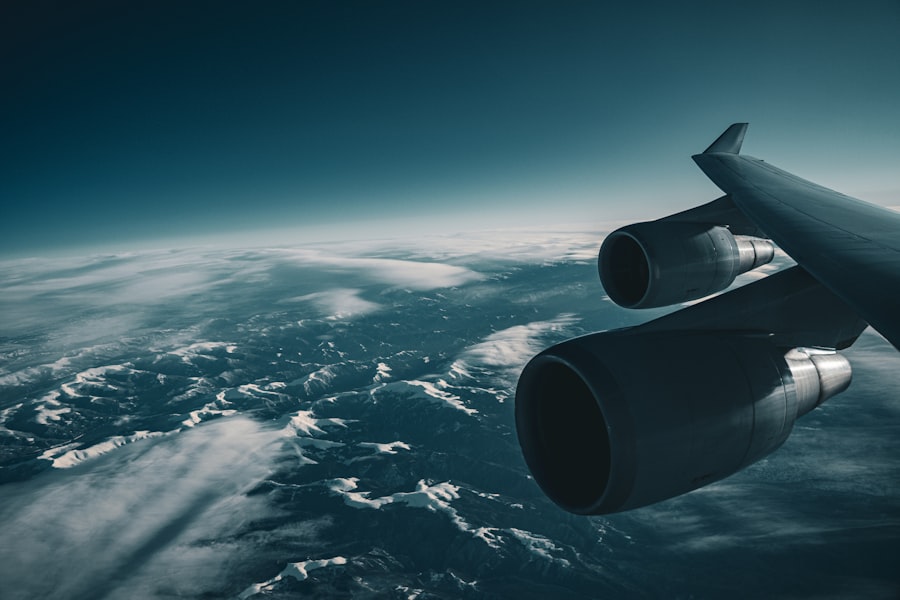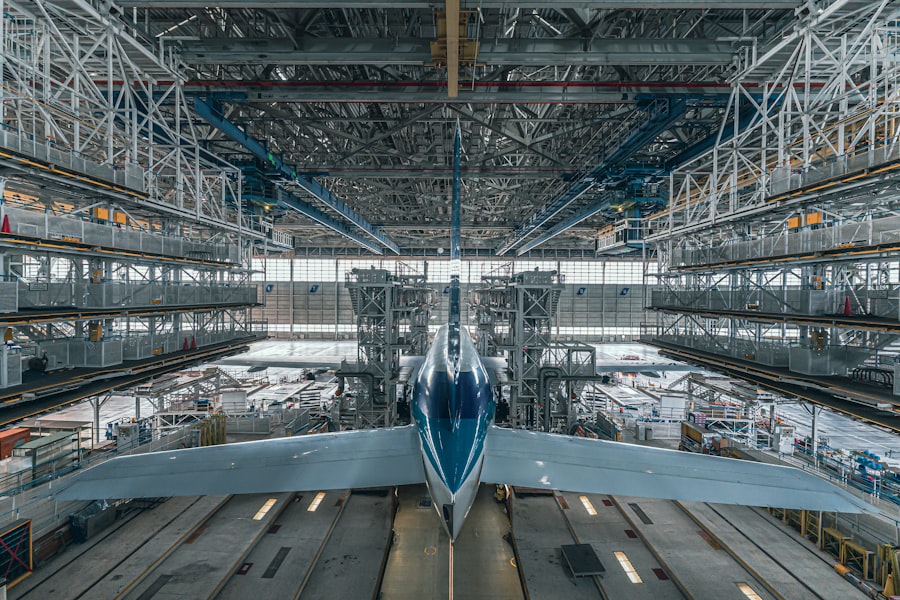The aerospace industry in 2022 stands as a complex and multifaceted sector that encompasses the design, development, production, and maintenance of aircraft, spacecraft, and related systems and equipment. This industry is not only pivotal for global transportation but also plays a crucial role in national defense, space exploration, and technological innovation. The aerospace sector is characterized by its high barriers to entry, significant capital investment, and a workforce that requires specialized skills.
In 2022, the industry is navigating a landscape shaped by both recovery from the pandemic and the rapid evolution of technology. As the world emerges from the disruptions caused by COVID-19, the aerospace industry is witnessing a gradual resurgence in air travel demand. Airlines are beginning to restore routes and increase flight frequencies, while manufacturers are ramping up production to meet the anticipated rise in passenger numbers.
The commercial aviation segment is expected to rebound, driven by pent-up demand for travel and a growing middle class in emerging markets. Concurrently, the defense sector remains robust, bolstered by geopolitical tensions and increased military spending in various regions. This duality of commercial recovery and defense stability creates a unique environment for aerospace companies as they strategize for growth and innovation.
Key Takeaways
- The aerospace industry in 2022 is experiencing significant changes due to the impact of the COVID-19 pandemic, emerging technologies, and environmental sustainability concerns.
- The COVID-19 pandemic has led to a decrease in air travel, resulting in financial challenges for aerospace companies and a shift in focus towards cost-cutting measures and innovation.
- Emerging trends and technologies in aerospace, such as electric propulsion and advanced materials, are driving innovation and shaping the future of the industry.
- Aerospace companies are facing challenges such as supply chain disruptions, workforce shortages, and geopolitical tensions, but also have opportunities to capitalize on growing demand for air travel and space exploration.
- Environmental sustainability is a key focus for the aerospace industry, with a push towards reducing carbon emissions, developing sustainable aviation fuels, and investing in electric and hybrid aircraft technologies.
Impact of the COVID-19 Pandemic on the Aerospace Industry
The COVID-19 pandemic had a profound impact on the aerospace industry, leading to unprecedented challenges that reverberated across all sectors. In 2020, air travel plummeted to historic lows as countries imposed travel restrictions and lockdowns to curb the spread of the virus. Airlines faced massive financial losses, with many reporting declines in passenger numbers exceeding 90% at the height of the crisis.
This downturn forced airlines to ground fleets, defer aircraft deliveries, and implement drastic cost-cutting measures, including layoffs and furloughs. The ripple effects were felt throughout the supply chain, affecting manufacturers, suppliers, and service providers. As 2022 unfolded, the industry began to recover from these setbacks, but the scars of the pandemic remained evident.
Airlines were grappling with operational challenges such as staffing shortages and rising fuel costs. The recovery was uneven across different regions; while domestic travel in markets like the United States rebounded relatively quickly, international travel lagged due to ongoing restrictions and varying vaccination rates. Additionally, the pandemic accelerated trends such as digital transformation and remote work, prompting aerospace companies to rethink their operational models and invest in technology that enhances efficiency and customer experience.
Emerging Trends and Technologies in Aerospace

In 2022, several emerging trends and technologies are reshaping the aerospace landscape. One of the most significant developments is the increasing focus on sustainability and reducing carbon emissions. The industry is under pressure to adopt greener technologies, with manufacturers exploring alternative fuels such as sustainable aviation fuel (SAF) and electric propulsion systems.
Companies like Boeing and Airbus are investing heavily in research and development to create more fuel-efficient aircraft that meet stringent environmental regulations while also appealing to environmentally conscious consumers. Another notable trend is the integration of advanced digital technologies into aerospace operations. The adoption of artificial intelligence (AI), machine learning, and big data analytics is transforming how companies design, manufacture, and maintain aircraft.
For instance, predictive maintenance powered by AI can help airlines anticipate equipment failures before they occur, reducing downtime and maintenance costs. Additionally, digital twins—virtual replicas of physical systems—are being utilized to optimize design processes and enhance performance monitoring throughout an aircraft’s lifecycle.
Challenges and Opportunities for Aerospace Companies
| Challenges | Opportunities |
|---|---|
| Increasing competition in the aerospace industry | Expansion into emerging markets |
| Rising costs of research and development | Advancements in technology for efficiency and innovation |
| Regulatory hurdles and compliance requirements | Growth in demand for commercial air travel |
| Environmental concerns and sustainability | Development of sustainable aviation fuels and technologies |
Despite the positive signs of recovery in 2022, aerospace companies face a myriad of challenges that could hinder their growth prospects. Supply chain disruptions remain a significant concern as manufacturers struggle to source critical components amid ongoing global shortages. The semiconductor crisis has particularly affected the aerospace sector, leading to delays in production schedules and increased costs.
Companies must navigate these complexities while ensuring they maintain quality standards and meet delivery timelines. However, these challenges also present opportunities for innovation and collaboration within the industry. Companies are increasingly looking to diversify their supply chains by sourcing materials from multiple suppliers or investing in local production capabilities.
This shift not only mitigates risks associated with global supply chain dependencies but also fosters resilience against future disruptions. Furthermore, partnerships between aerospace firms and technology startups are becoming more common as companies seek to leverage cutting-edge innovations that can enhance their competitive edge.
Environmental Sustainability in Aerospace
Environmental sustainability has emerged as a critical focus for the aerospace industry in 2022, driven by regulatory pressures and growing public awareness of climate change. The aviation sector is responsible for approximately 2-3% of global carbon emissions, prompting calls for more sustainable practices. In response, major players in the industry are committing to ambitious targets aimed at achieving net-zero emissions by 2050.
This commitment involves not only investing in new technologies but also re-evaluating existing operational practices. Sustainable aviation fuels (SAF) are at the forefront of this sustainability movement. SAF can reduce lifecycle greenhouse gas emissions by up to 80% compared to traditional jet fuel when produced from sustainable feedstocks.
Airlines such as United Airlines and KLM have begun incorporating SAF into their operations as part of their broader sustainability strategies. Additionally, manufacturers are exploring hybrid-electric propulsion systems that could revolutionize short-haul flights by significantly reducing emissions. The development of these technologies represents a crucial step toward aligning the aerospace industry with global climate goals.
Global Market Outlook for Aerospace

The global market outlook for aerospace in 2022 reflects a cautious optimism as recovery takes hold across various segments. According to industry forecasts, commercial aviation is expected to see a steady increase in passenger traffic as travel restrictions ease and consumer confidence returns. The International Air Transport Association (IATA) projects that global air traffic will reach pre-pandemic levels by 2024 or 2025, driven by strong demand in both leisure and business travel sectors.
In contrast, the defense segment remains robust due to heightened geopolitical tensions and increased military spending by nations worldwide. Countries are investing heavily in modernizing their defense capabilities, which bodes well for aerospace manufacturers specializing in military aircraft and systems. Additionally, space exploration is gaining momentum with both government agencies and private companies launching ambitious missions aimed at lunar exploration and Mars colonization.
This burgeoning interest in space presents significant opportunities for aerospace firms involved in satellite technology, launch services, and space tourism.
Regulatory and Policy Changes Affecting the Aerospace Industry
Regulatory frameworks play a pivotal role in shaping the aerospace industry’s operations and growth trajectory. In 2022, several key regulatory changes are influencing how companies approach safety standards, environmental compliance, and technological innovation. For instance, regulatory bodies such as the Federal Aviation Administration (FAA) and the European Union Aviation Safety Agency (EASA) are increasingly focusing on sustainability initiatives that require manufacturers to adhere to stricter emissions standards.
Moreover, advancements in technology have prompted regulators to reassess existing policies related to unmanned aerial vehicles (UAVs) or drones. As drone usage expands across various sectors—from delivery services to agricultural monitoring—regulatory bodies are working to establish frameworks that ensure safety while fostering innovation. These evolving regulations necessitate that aerospace companies remain agile and proactive in adapting their strategies to comply with new requirements while capitalizing on emerging market opportunities.
Strategies for Navigating Turbulence in the Aerospace Industry
To successfully navigate the turbulence inherent in the aerospace industry in 2022, companies must adopt multifaceted strategies that prioritize resilience and adaptability. One effective approach involves investing in digital transformation initiatives that enhance operational efficiency and customer engagement. By leveraging data analytics and automation technologies, aerospace firms can streamline processes from design to manufacturing while improving decision-making capabilities.
Collaboration is another key strategy for navigating challenges within the industry. Forming strategic partnerships with technology providers can enable aerospace companies to access innovative solutions that drive competitiveness. Additionally, engaging with stakeholders—including governments, regulatory bodies, and environmental organizations—can foster a collaborative environment conducive to addressing shared challenges such as sustainability.
Furthermore, companies should prioritize workforce development by investing in training programs that equip employees with the skills needed for an evolving industry landscape. As technological advancements reshape job roles within aerospace firms, fostering a culture of continuous learning will be essential for maintaining a skilled workforce capable of driving innovation. In conclusion, while the aerospace industry faces significant challenges in 2022—from supply chain disruptions to regulatory changes—the opportunities for growth through innovation and collaboration are equally compelling.
By embracing sustainability initiatives and leveraging emerging technologies, aerospace companies can position themselves for success in an increasingly competitive global market.


